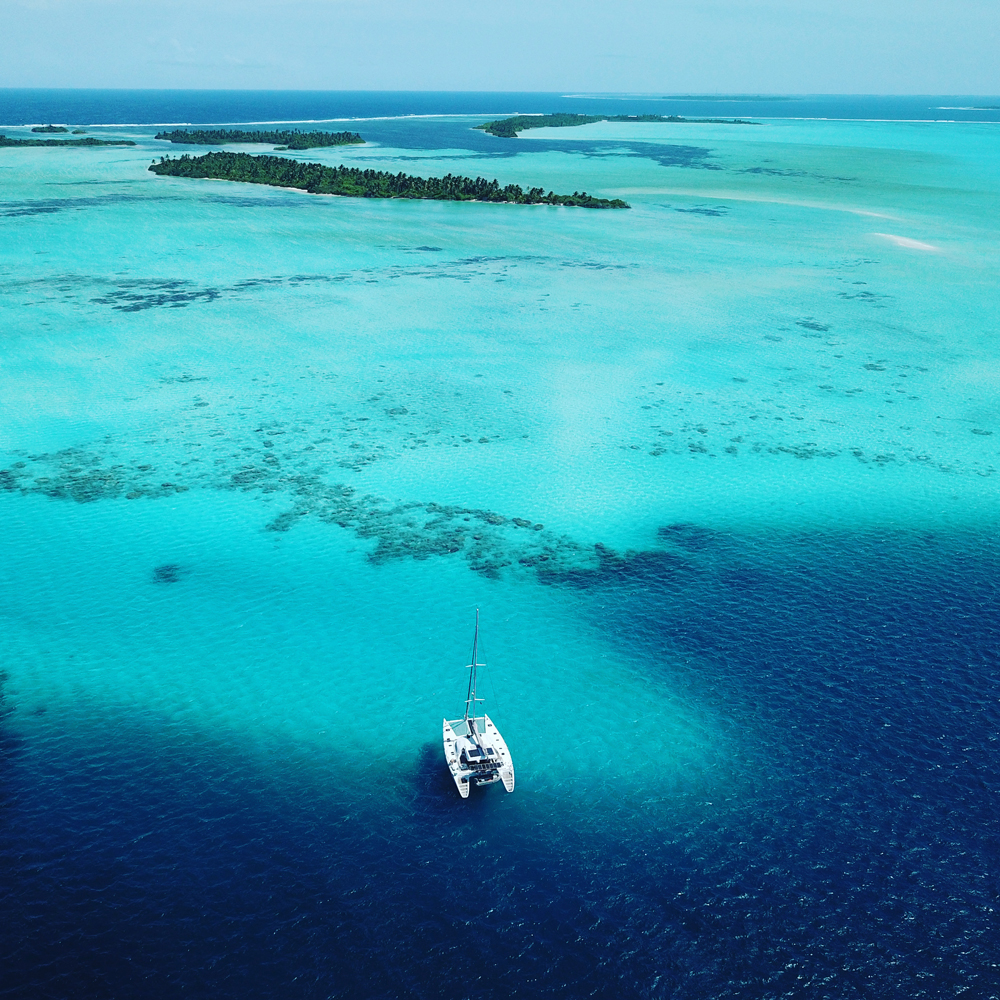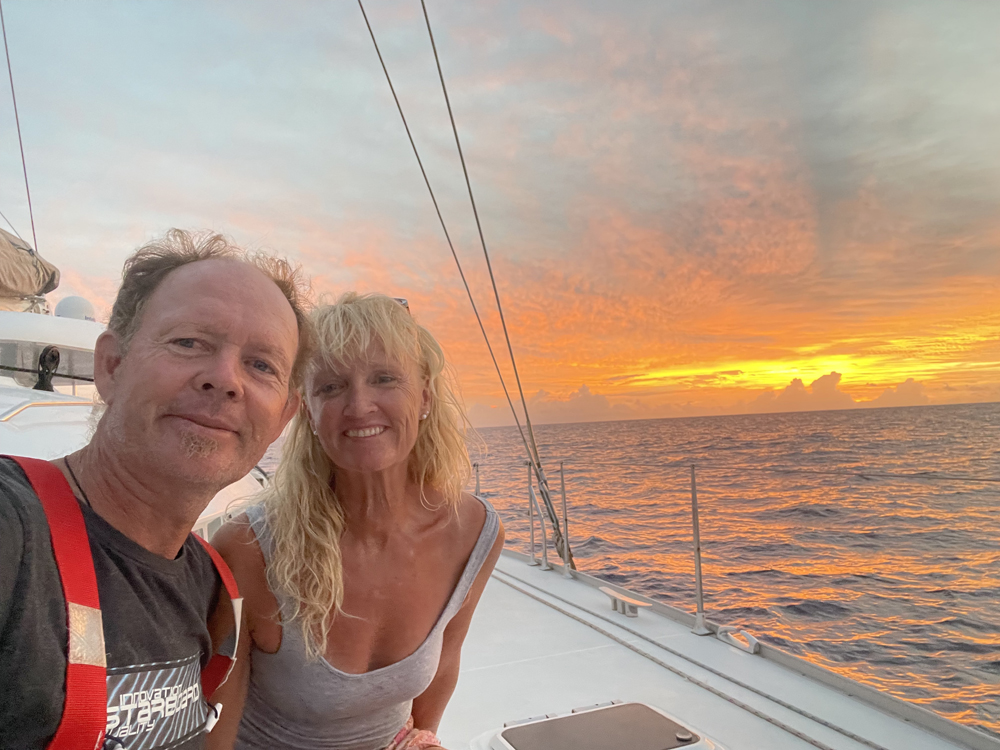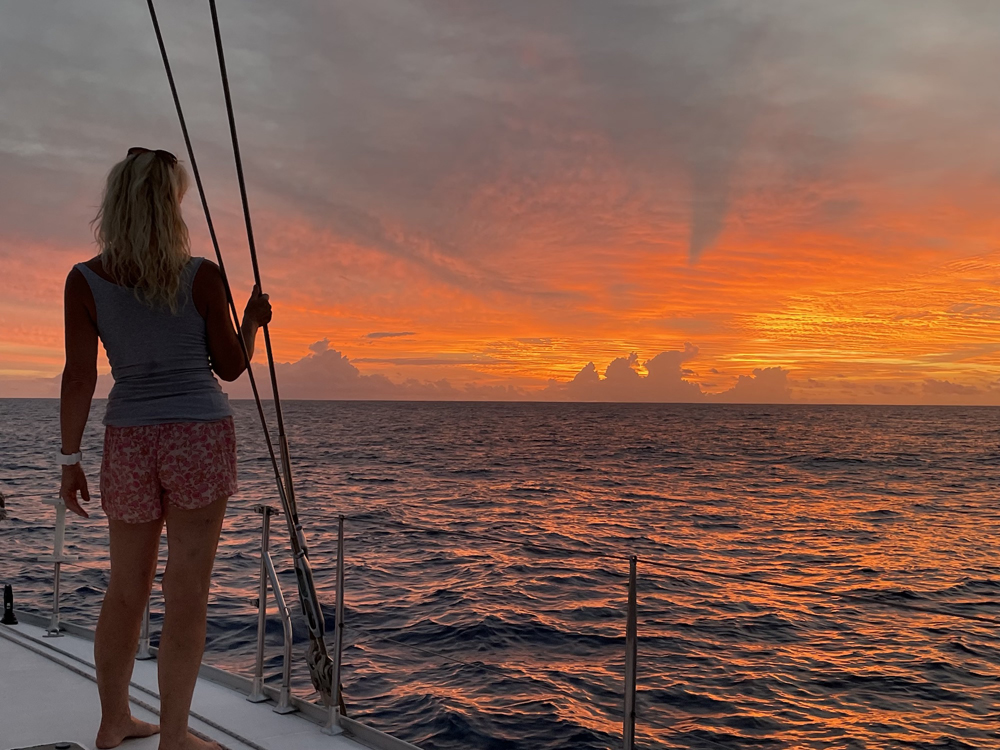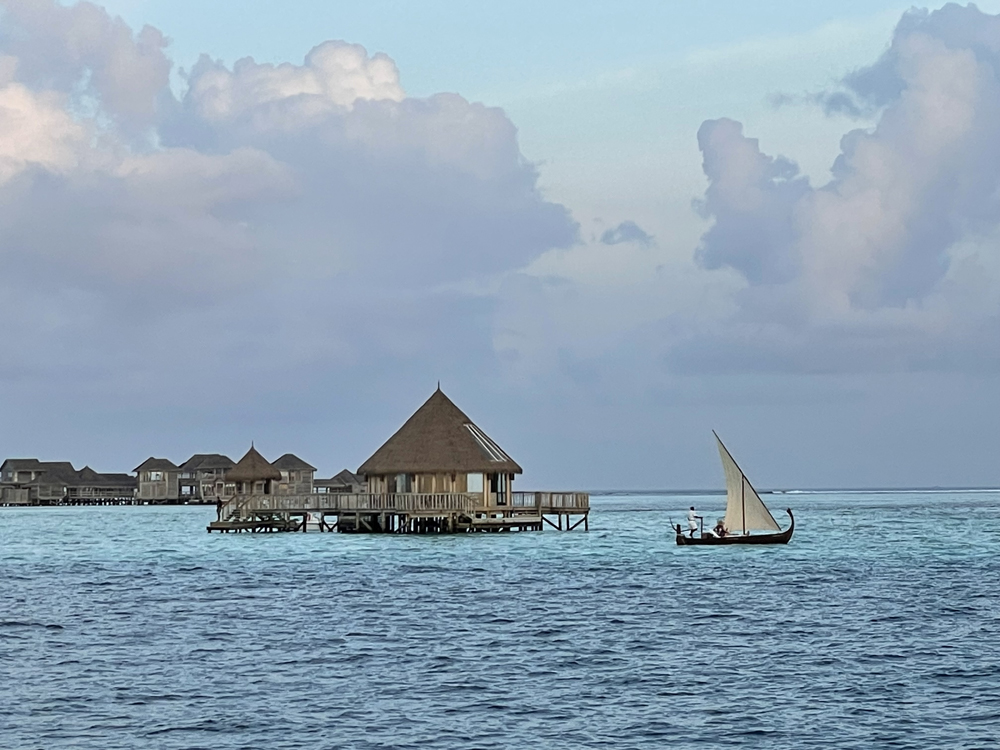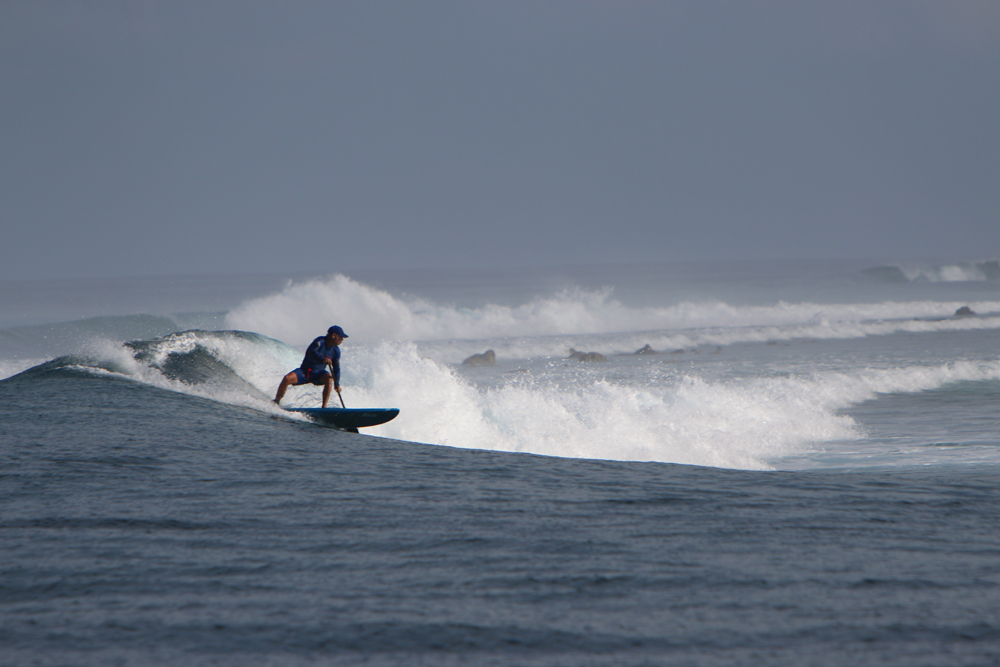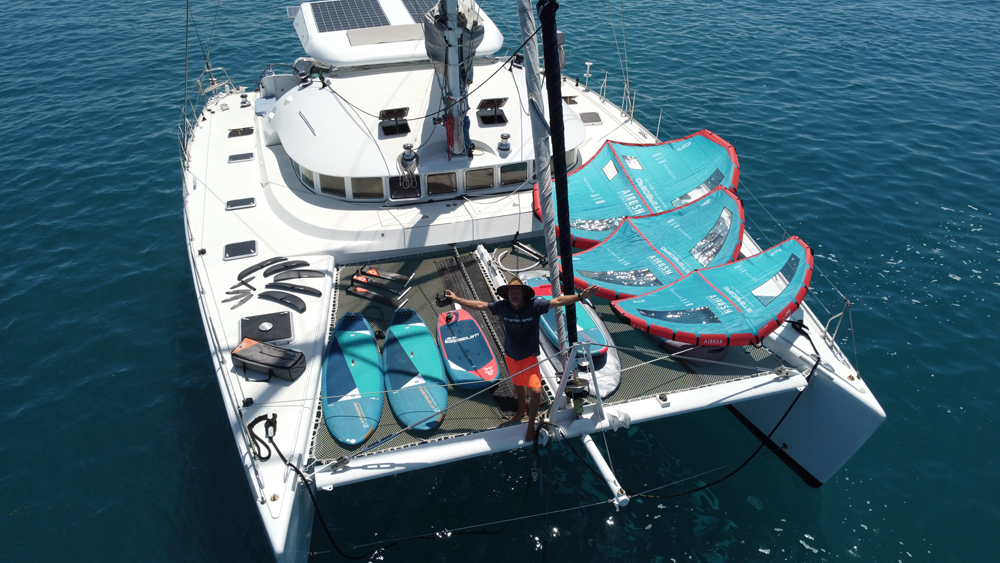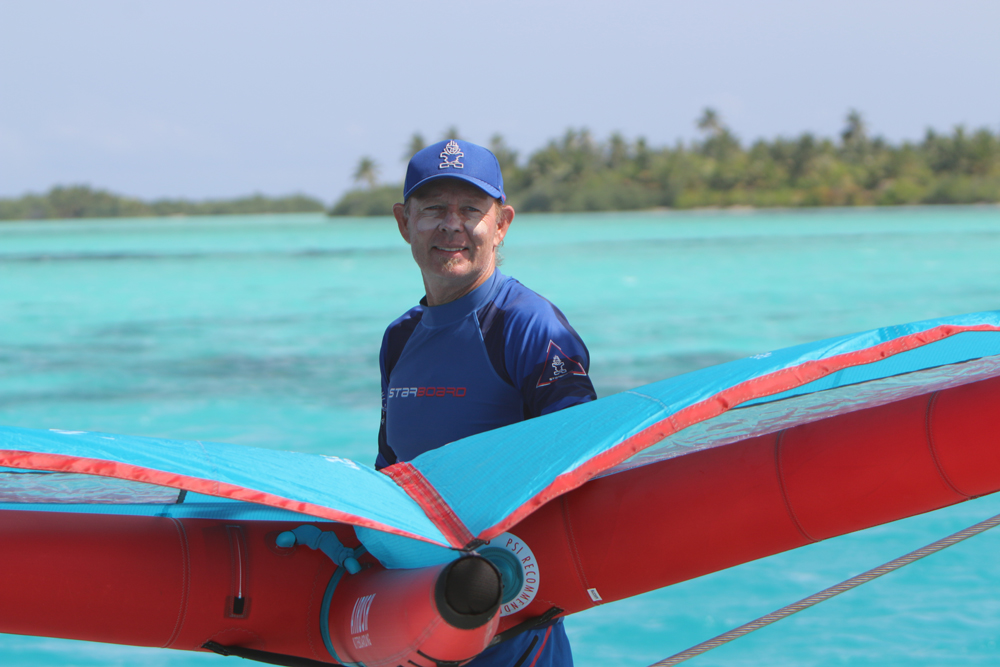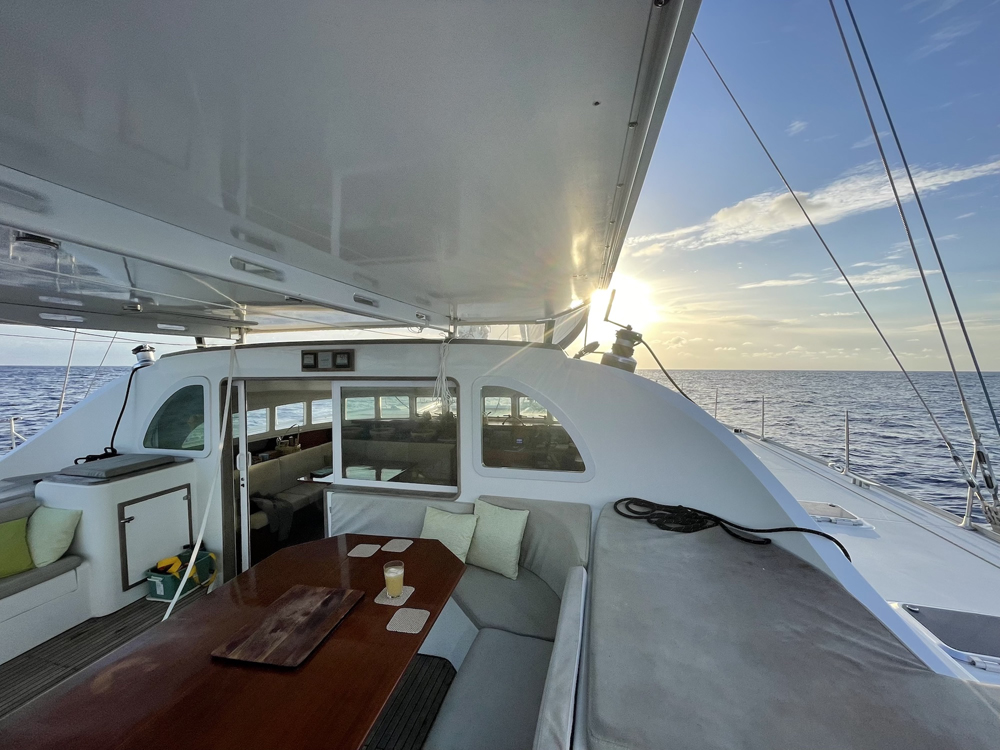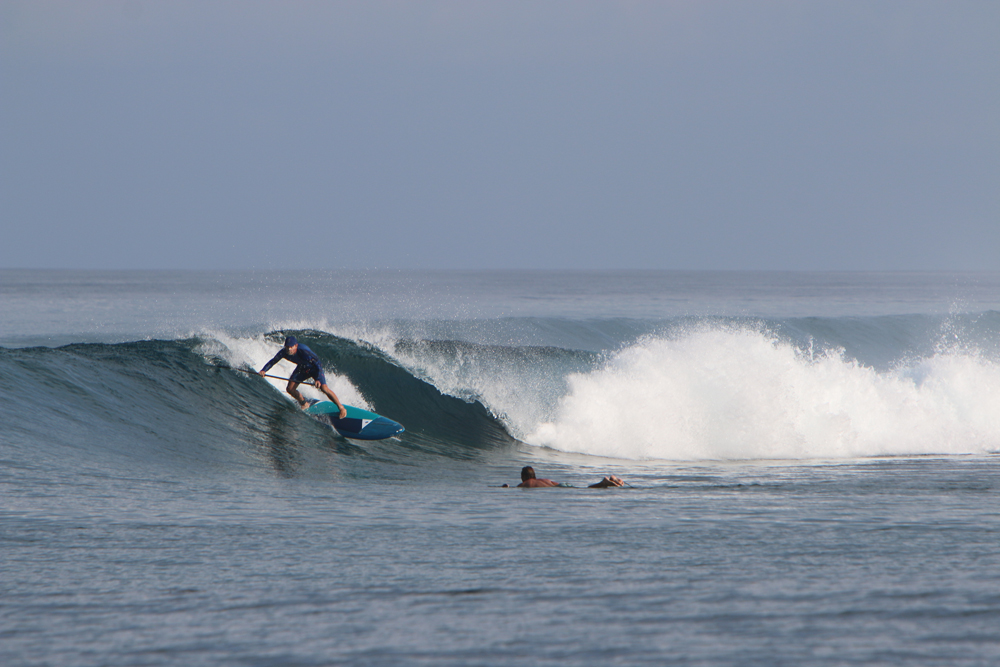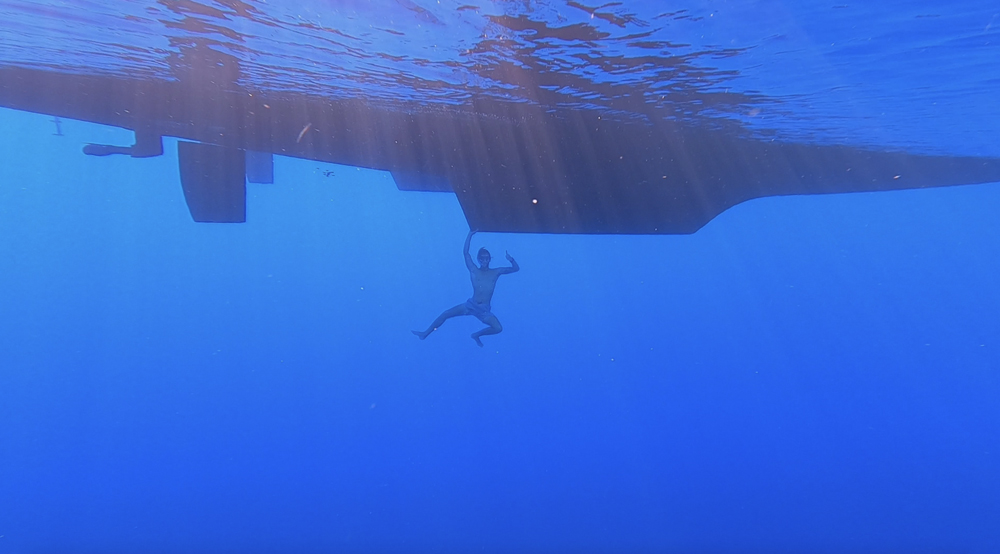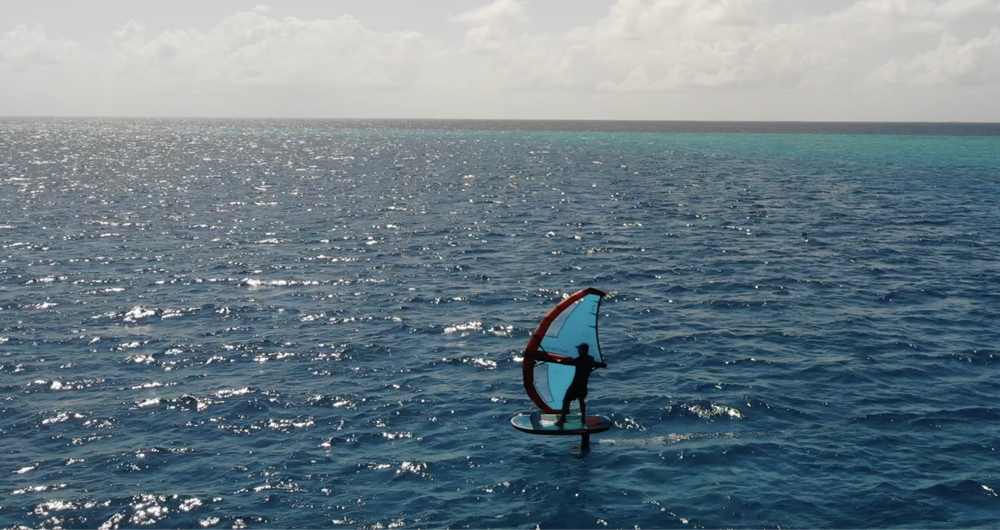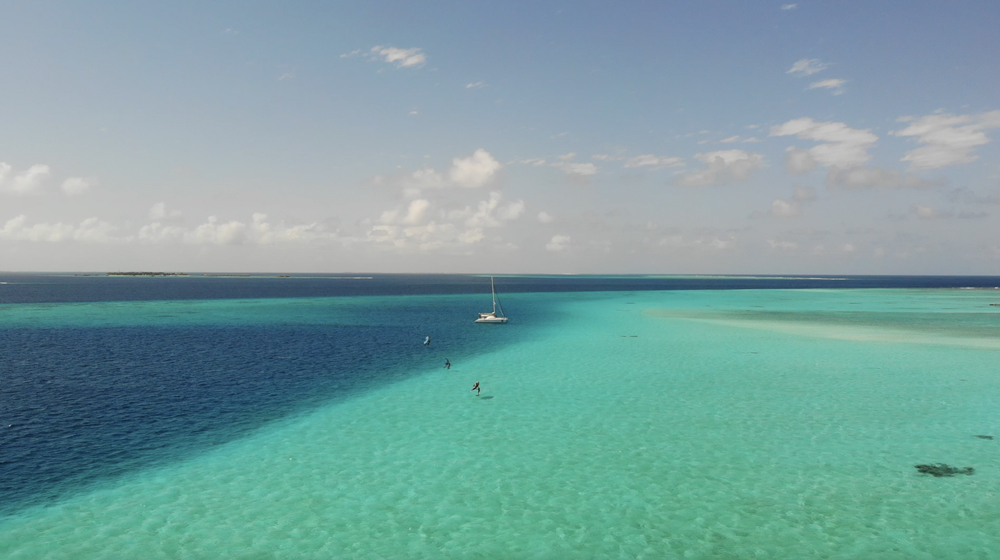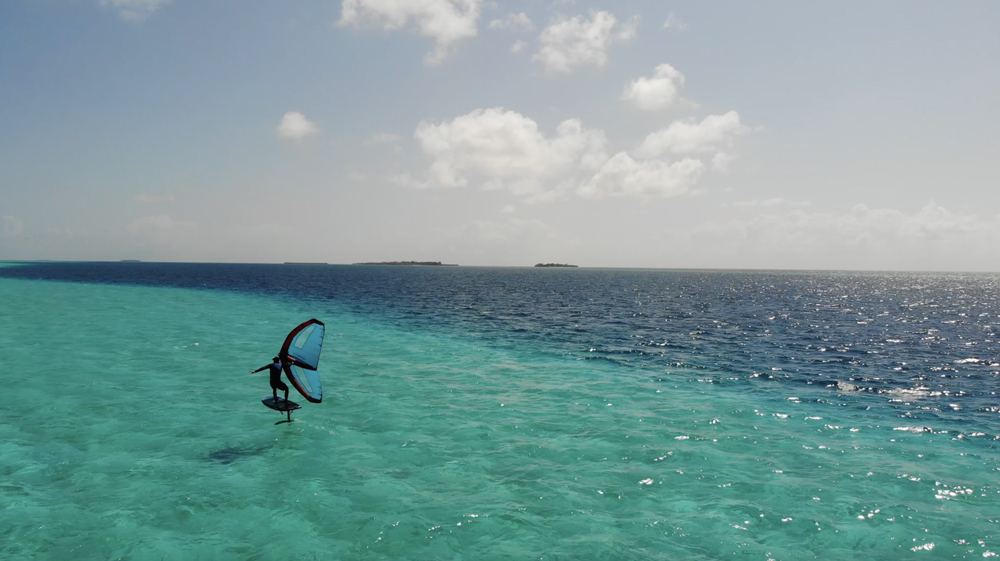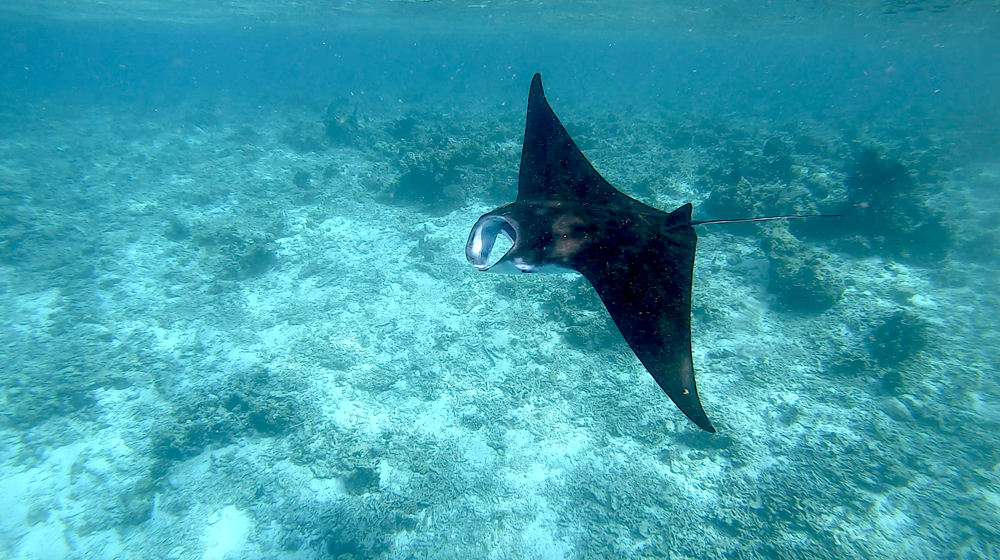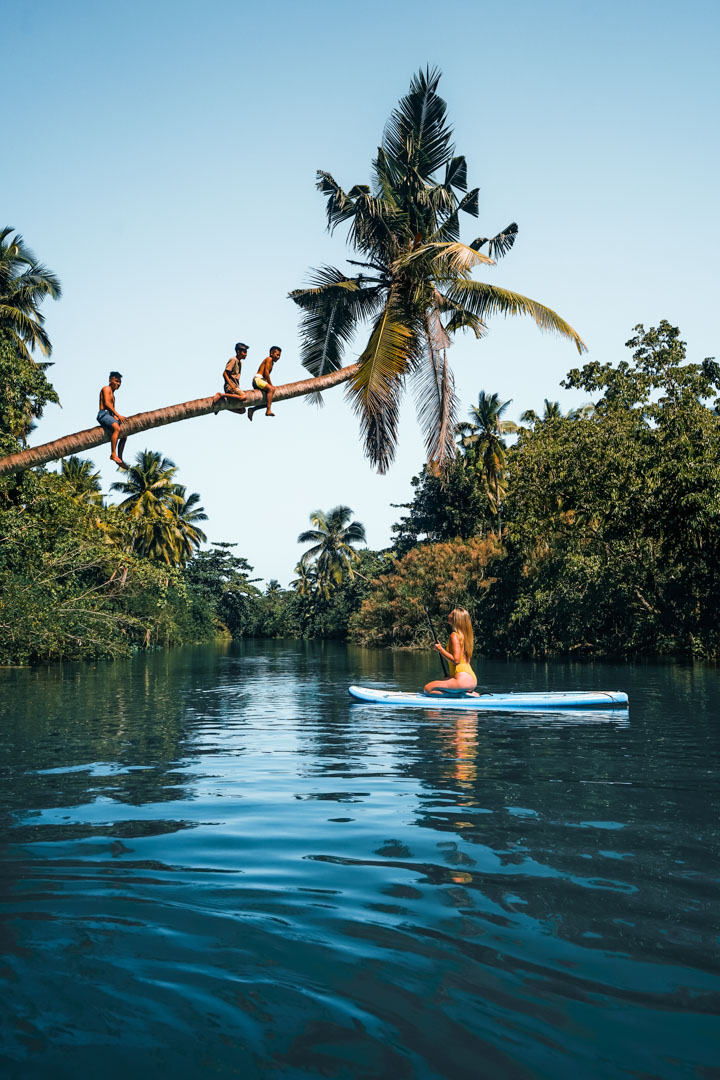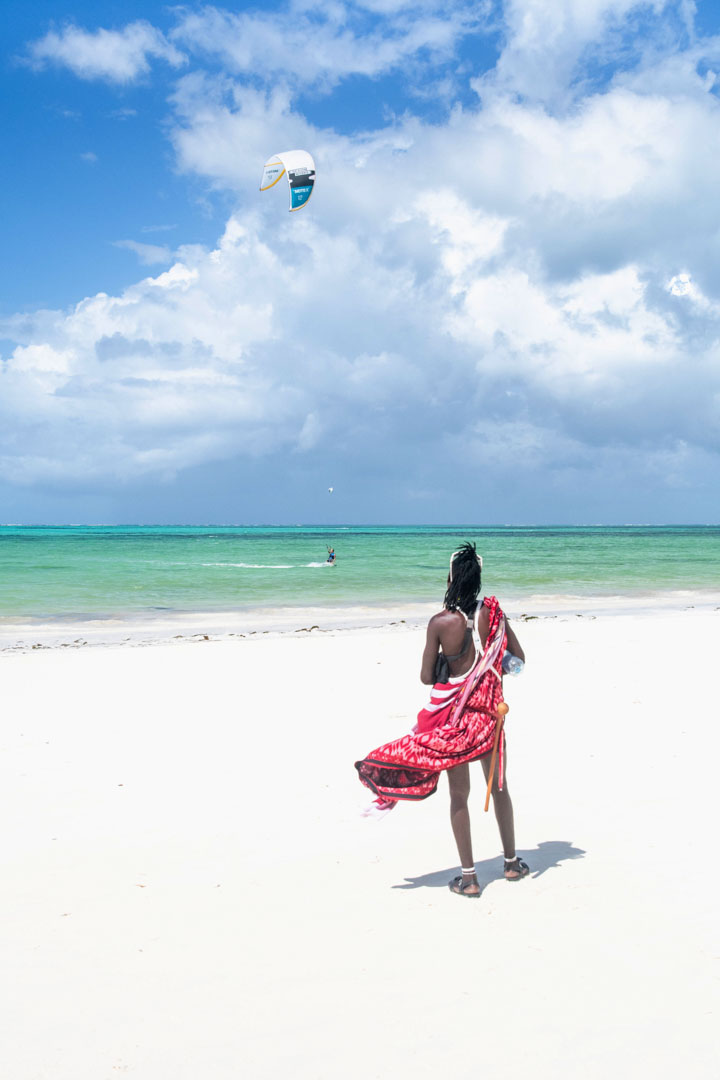The sun is setting on the horizon. A few clouds make this sunset even more spectacular than those from the days before. It is already our last day in the Maldives. Two days ago, we found the perfect anchorage in a pass right next to a barreling right hander. Today we had the whole place to ourselves! It doesn’t get any better than this. We surfed the whole day with Pierre on his short board and me on my 8’0 Starboard Blue Carbon Pro.
For almost three months we sailed between the atolls, surfed the reef breaks, wing foiled and kited over the turquoise water. This is basically our new job. Sailing with guests around the world from one (remote) spot to another. Sounds like paradise, but it’s also hard work. It starts in the morning at 6:00AM, preparing breakfast for our guests, and stops in the evening at 9:00PM after everything is cleaned up.
For me, the best way to travel the world is by boat. You just get to many places you would normally never get to in a very climate-friendly way. It’s just that we’re very slow. What would be an eight-hour airline flight takes us four weeks. I often think of the famous words, ‘It’s all about the journey, not the destination’. For me, traveling is very much like that.
My wife and I re-invented ourselves, from owning and working in a windsurf & SUP shop to sailing guests around the world, with the main objective to find kite, SUP surf and wing foil locations along the way. Twelve years ago we circumnavigated the globe in a thirty-year-old monohull. We still have fond memories of the places we visited then, the people we met, and the simple lifestyle. This time we started on a catamaran - a huge upgrade for us. More space for guests, ourselves, and for all the paddle, kite, surf and wing gear.
We started off in the Seychelles, a paradise. We worked hard for four weeks to get the boat ready and didn’t see much of the islands. Then we crossed the Indian Ocean and sailed to the Maldives where we would pick up our first guests.
The Maldives consist of twenty-four atolls and about twelve hundred islands. Officially the highest point is only two meters above sea level. Climate change and its consequences are a very real threat here. Most of the islands are tiny little sandbars. There used to be many uninhabited islands but nowadays most have become resorts. Tourism is almost the only source of the Maldives’ national product, and land is scarce.
We arrived in Gan, the southernmost island of the Maldives. After we had the customs officials board and clear us for entry, we were allowed on land. Because of Covid we could not visit inhabited islands except the two main ‘cities’ of Gan and Malé. They are about 250 miles apart and were the only places we could get groceries. This required careful planning for our ten-day trips with nine guests on board. We had three weeks to ourselves before our first guests arrived. We decided to sail to Gaafu Atoll and found what we were looking for in a quiet anchorage between the reefs with a surf break one mile further. The second day, disaster struck. While Dagmar was standup paddling, I thought it was a great idea to film her paddling over the reefs with the drone.
I launched the drone and while fully concentrated on the screen, I stepped back and fell through an open hatch. I landed on my side and back and instantly knew that it was not good. I could hardly move, sleep or swim for the next few days. We sailed slowly to the capital, Malé, where we decided to visit the hospital and have my injuries checked out. Many X-rays, CT scans and doctors later, it turned out I had two broken ribs, a tear in a disk, and blood in my stomach from some internal bleeding caused by one of the ribs. I was out of commission for six weeks minimum.
The first three weeks were not easy but then I started to feel improvements. By the fifth week I started to wing and by week six I was better. The body is amazing in just how fast it can repair itself.
By now we had our first guests on board and we explored the northern atolls. Weather was a challenge with light winds and squalls gusting up to 40 knots. This made it increasingly difficult to find decent anchorages. The atolls come straight up out of the depths of the ocean. In the atolls, generally 50 meters deep, there are many super shallow circular reefs, and it’s either too shallow or too deep. We visited the great - but very crowded - surf breaks of the Male atoll and spent time behind little remote reefs. We snorkeled with sharks, with big schools of fish and manta rays. The manta rays are the most spectacular species, since they move so elegantly and without effort. Every time we see one we know we’re seeing something truly extraordinary. Nature is just so beautiful.
There are many beautiful parts of the Maldives, but also challenging contrasts. To get to the nicer spots we had to sail far from the tourist center of the North Atoll, where the surf breaks are crowded and all the pristine locations are snatched up by the resorts. In the south it is quieter and becomes more like one would imagine the Maldives to be: small palm-overgrown islands, with dolphins and manta rays playing around the boat, and great uncrowded surf breaks.
Another challenging contrast is the garbage. There is so much plastic waste on the beaches! Parley Maldives, an organization that addresses today’s ocean threats like marine plastic pollution, is doing a dedicated job cleaning up one beach at the time. Unfortunately, many here still have to be educated about the basics. Don’t throw plastic in the water and don’t leave garbage everywhere! It requires an effort from the ground up which starts in the schools and will take many more years. Often tourists don’t see this unsightly part of paradise because resorts make sure they clean their beaches every day. I think the government has to play a bigger role here. But there is also some good news. They just received a waste disposal and recycling machine which means they will stop burning the garbage from the capital.
We found the best spots in the Southern Laamu and Gaafu Atolls. During the SW monsoon season of May-October, the winds are stronger in the north and light in the south. The waves break on the shallow reefs and are not the easiest to surf. These are mostly fast, hollow waves, where one mistake can wash you over the reef. We tend to go out only during the medium to high tides which saves us from a lot of reef rash.
Winging, on the other hand, is better in the northern part just because there is more wind. I used my Starboard 5’8 x 25 Wingboard and 4 meter Freewing Air which works for me in most conditions between 10 and 25 knots of wind. It is amazing what the range is with a wing. Flying above crystal clear water and seeing the coral, fish and rays from up high never gets old.
Our good friend and first mate, Pierre, just caught a fish for lunch. Tomorrow is our last day. With the swell building to 10-foot overnight it promises to be a great finale for our adventure in this part of the world. Next, we will be off to South Africa on a four week crossing where we’ll pass by Mayotte, Madagascar and Mozambique. We can’t visit any of those places, but we will be able to hide out in case of bad weather.
The journey continues…


